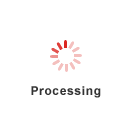Reverse Osmosis (RO) Chemicals for water treatment typically include antiscalants, biocides, membrane cleaners, and pH adjusters. Key specifications and technical properties are as follows:
Size: Liquid formulations are commonly available in 20L, 200L, or 1000L containers. Solid forms may come in 25kg bags or drums.
Grade: Industrial grade, high-purity grade, or USP/EP grade depending on application (e.g., potable water vs. industrial use).
Viscosity: Typically ranges from 1-1000 cP (centipoise), depending on concentration and chemical composition.
Buoyancy: Not applicable for most liquid chemicals; solid forms are non-buoyant.
Material: Composed of polymers (e.g., polyacrylic acid), phosphonates, sulfonates, or organic acids for antiscalants; oxidizing or non-oxidizing biocides like chlorine or isothiazolinones.
pH Range: Varies by product; antiscalants typically work in pH 5-9, while cleaners may require acidic (pH 2-4) or alkaline (pH 10-12) conditions.
Density: Liquid formulations range from 1.0-1.3 g/cm³.
Solubility: Fully soluble in water for most RO chemicals; some cleaners may require dilution.
Storage Temperature: Typically 5-40°C to prevent degradation or crystallization.
Packaging: HDPE (High-Density Polyethylene) drums or IBCs (Intermediate Bulk Containers) for liquids; laminated bags for solids.
